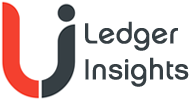Goldman Sachs, Moody’s and Hong Kong FMI Services are the latest members to join the Global Synchronizer Foundation (GSF), a governance body linked to the Canton Network based on Digital Asset’s blockchain technology.
Hong Kong FMI Services is part of the Hong Kong Monetary Authority and oversees the operation of Hong Kong’s central securities depository (CSD), the CMU. The CMU already integrated Canton technology for the trading of Hong Kong government bonds.
And Goldman’s digital asset platform GS DAP runs its own Canton blockchain, although the investment bank has plans to spin out the platform so that it’s industry owned.
“Joining the Global Synchronizer Foundation aligns with our ongoing commitment to driving blockchain innovation in regulated financial markets,” said Mathew McDermott, Global Head of Goldman Sachs Digital Assets.
These additions bring the total number of GSF members to more than 30. GSF is under the umbrella of the Linux Foundation, with existing members including Broadridge, Euroclear, SBI Digital Assets and Tradeweb.
“This collaboration underscores our commitment to helping market participants understand the risks and opportunities of Digital Finance,” said Fabian Astic, Managing Director and Global Head of Digital Economy at Moody’s Ratings.
“It also provides us with an opportunity to further engage with leading institutions working towards enhanced transparency, security, and scalability in the digital financial markets of the future.”
The path to decentralization
While Canton is a permissioned blockchain, the Canton Network aims to allow users of the technology to create interoperable solutions to address fragmentation and silos. Hence, the Canton Network is a public but permissioned DLT network.
Digital Asset claims the network is permissionless because participants can choose the level of permissions and privacy around data. However, we additionally assess the permissioned aspect on whether or not anyone can add a supernode that validates transactions without getting approval from anyone else or participating in GSF.
For example, the Hedera network is also a public permissioned DLT as large corporates still control validator nodes with write permissions, although it plans to transition to fully permissionless.
Digital Asset claims anyone can become a super validator on Canton without participating in GSF. However, they need “a 2/3 vote of the DAO comprised of the existing SVs (super validators).”
Meanwhile, Canton was designed to be privacy first. For most significant Ethereum-based networks, privacy is still a work in progress.
The Global Synchronizer Foundation has members who help in the governance decisions versus supernode operators. The GSF says its “structure ensures that no single entity controls the network, enabling greater trust, resilience, and innovation.”
For a network that started off based on Digital Asset technology, it will take time to become fully decentralized, although Digital Asset asserts it already is. In our view decentralization requires significant diversity in node operators. Based on public records, Digital Asset appears to operate two out of ten supernodes on the mainnet. The company says that no entity controls more than 20% of nodes.
We note that Digital Asset potentially has influence over other node operators although it disagrees. For example, MPC Holdings is providing security to the network and operates two nodes. Trading firm DRW founded Digital Asset and DRW Cumberland operates another couple of nodes, with another investor, SBI, hosting one node.
Ultimately, decentralization is a journey not a destination. As the GSF expands, it will likely become more and more decentralized.
Update: Digital Asset objected to our portrayal of the Canton Network as permissioned and not yet decentralized. We have added some clarification.
Ledger Insights Research has published a report on bank-issued stablecoins and tokenized deposits featuring more than 70 projects. Find out more here.






